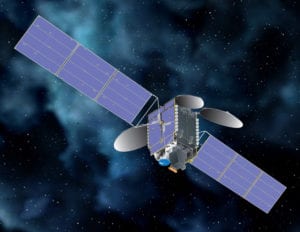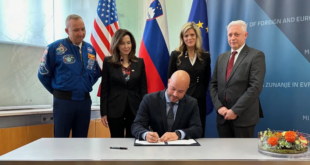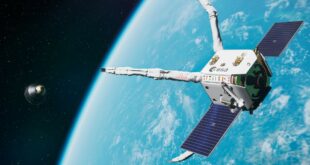
Maxar will integrate and fly NASA’s Tropospheric Emissions: Monitoring of Pollution (TEMPO) instrument on a 1300-class satellite in geostationary (GEO) orbit. TEMPO will be the first space-based instrument to provide hourly monitoring of major air pollutants during the daytime across the North American continent at high spatial resolution.
TEMPO is a UV-visible spectrometer that will observe Earth from a vantage point about 22,000 miles above Earth’s equator. It will detect pollutants by measuring sunlight reflected and scattered from Earth’s surface and atmosphere. The resulting data from TEMPO will be used to enhance air quality forecasts in North America, enabling more effective early public warning of pollution incidents.
Maxar previously completed a study to accommodate TEMPO on a commercial GEO satellite. Building on the successful completion of the study, Maxar has been selected to integrate and fly the TEMPO payload. The instrument is currently slated for launch by 2022.
“Maxar has more than half a century of experience developing and operating satellites and advanced infrastructure to unlock the promise of space for customers around the world. We have a long history of building meteorological spacecraft and instruments, including eight Geostationary Operational Environmental Satellite Program (GOES) satellites for NASA,” said Megan Fitzgerald, Maxar’s Senior Vice President and General Manager of Space Solutions. “We’re proud to collaborate with NASA on TEMPO, which will provide critical insights on air pollution to enable impactful solutions for a better world.”
“TEMPO payload completed production and was fully qualified last year. Now, with Maxar leading the charge on integrating TEMPO onto a commercial satellite, the mission will rapidly progress to launch and operations,” said Stephen Hall, NASA’s TEMPO Project Manager.
“Finding the right commercial partner to integrate our payload was of utmost importance to us, and Maxar’s strong legacy in bridging commercial and government needs made it the perfect candidate. TEMPO will revolutionize the way NASA samples and analyzes critical air quality measurements,” said Kelly Chance, Principal Investigator, Smithsonian Astrophysical Observatory. “Critical partners in the analyses of TEMPO data include the U.S. Environmental Protection Agency (EPA) and the National Oceanic and Atmospheric Administration (NOAA), the National Center for Atmospheric Research (NCAR), plus U.S. universities and foreign partners, including Mexico and Canada.”
To identify a host, NASA employed the streamlined U.S. Air Force Hosted Payload Solutions (HoPS) contract vehicle to solicit proposals from commercial companies to provide satellite integration, launch services and ground operations. With decades of experience in building both GEO and low Earth orbiting satellites, including more than 90 GEO satellites on orbit today, Maxar is uniquely positioned to help government agencies obtain access to space for instruments, sensors, and other small missions on commercial spacecraft.
 SpaceWatch.Global An independent perspective on space
SpaceWatch.Global An independent perspective on space




